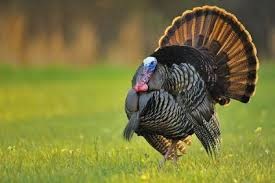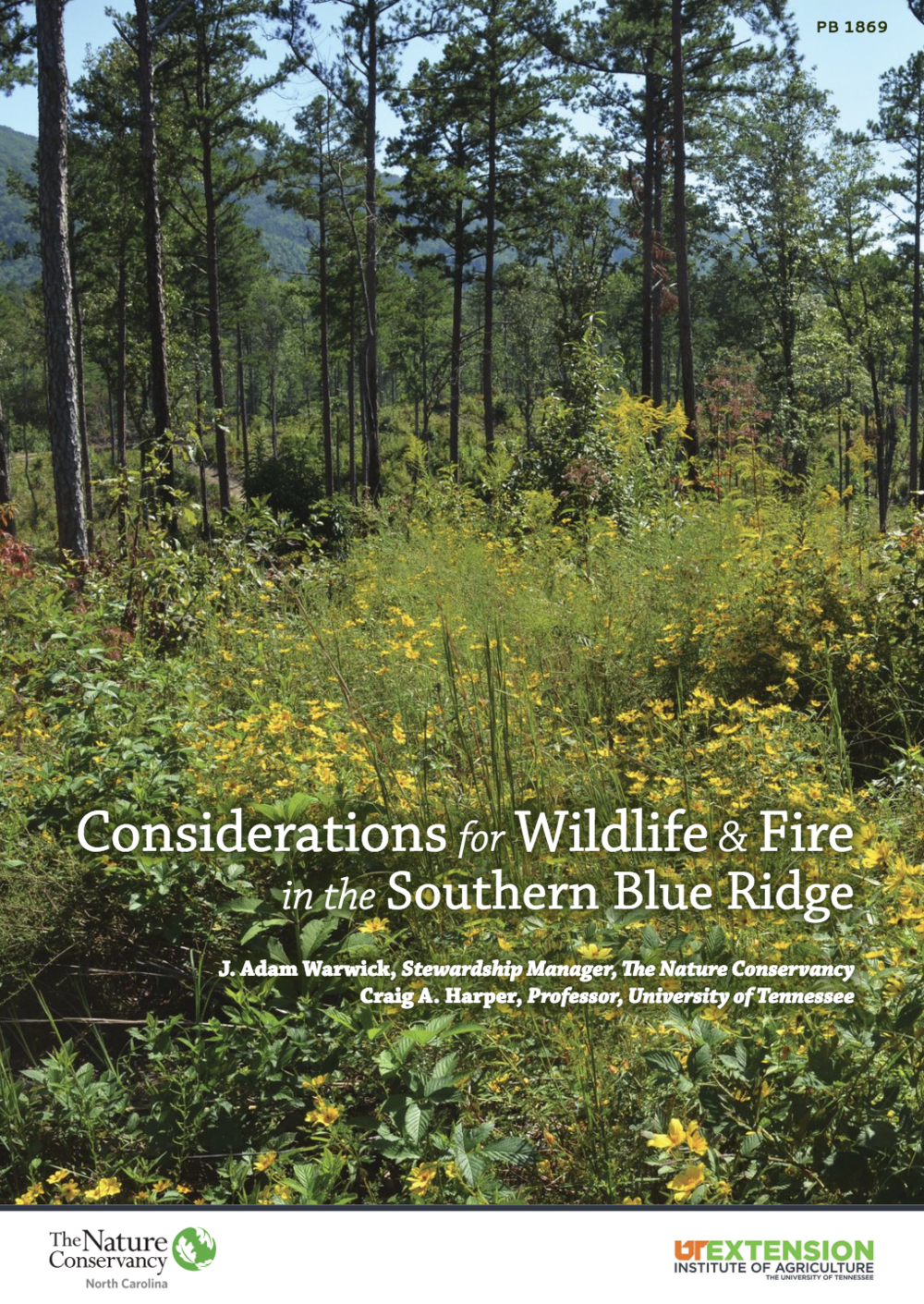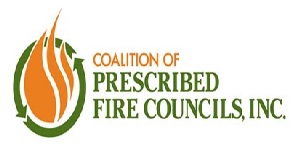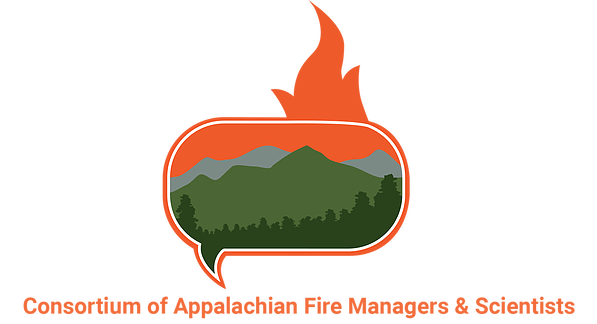Prescribed Fire & #BurnAlerts
Wildland fire has played an essential role in the health of the Chattahoochee-Oconee National Forest's oak and pine stands for thousands of years. Researchers studying fire-scarred trees have found that fires occurred periodically, often every 3-9 years, dating back to the mid-1600s, and soil charcoal records show that fire has been a part of these mountains for at least 10,000 years. After years of continuous exposure to fire, our landscape has become fire-adapted and needs fire to remain healthy.
Prescribed fire is a fire management tool that allows us to reintroduce the benefits of fire to the landscape in a safe and controlled way. Under the guidance of our Forest Plan Goals and Objectives for Fire Management, Forest land managers prescribe fire to Forest areas as a way to better wildlife habitat, reduce forest fuels (like brush, dry leaves, and shrubs), and better the general health of the Forest. When conditions are just right, fire managers carry out the prescribed fire treatments essential to improving wildlife habitat and maintaining a healthy forest. Every year, fire managers successfully treat around 35,000 acres on the Chattahoochee-Oconee National Forests through prescribed fire.
The Chattahoochee-Oconee National Forests fire management program mission is to manage fuels at the landscape scale to restore and maintain fire-resilient landscapes that are compatible with their historical fire return interval, a core goal of the National Cohesive Wildland Fire Management Strategy.
Learn more: Prescribed Fire in Georgia: Frequently Asked Questions
Overview: Fire Management on the Chattahoochee-Oconee National Forest
Current Prescribed Fire Activities
The following maps are provided to inform the public of prescribed fire activity, however the information therein does not constitute official government data. Please see Monitoring and Evaluation of the Forest Plan Implementation reports listed on the Planning website for official information.
Planned Controlled Burns
Expand Burn Tracker to full screen view
Accomplished Controlled Burns
Expand Burn Tracker to full screen view
Historical Information
-
FY2024 Prescribed Fire Acres to date: 55,237 acres
-
CY2024 Wildfires to date: 24 wildfires totaling 414 acres
Sign Up for #BurnAlerts
Sign up or follow us on social media to receive #BurnAlerts notifications when a prescribed fire will occur in your area. The following methods are available to you, which are updated to provide official public notification of prescribed fire activities.
Email: Sign up for #BurnAlerts
Twitter: @ChattOconeeNF
Web Alerts: http://www.fs.usda.gov/alerts/conf/alerts-notices
Call your nearest office:
Chatsworth 706-695-6736
Blairsville 706-745-6928
Lakemont 706-754-6221
Eatonton 706-485-7110
Gainesville 770-297-3000
Be advised that smoke from prescribed fire may cross state boundaries. Find #BurnAlerts for the Cherokee National Forest, the National Forests in North Carolina, the Francis Marion & Sumter National Forests, and the National Forests in Alabama on their websites.
Learn More about Prescribed Fire
A fire manager describes how forests treated with prescribed fire improves habitat for many wildlife species, including several birds and amphibians.
District Fire Management Officer talks about restoring Longleaf pine
Burn boss describes a prescribed fire strategy for controlling a burn
District biologist Mike Brod talks about creating open woodland habitat with prescribed fire.
District Fire Management Officer Amy McClave talks about reduction of hazardous fuels in the Wildland-Urban Interface and Firewise.
- Georgia DNR: prescribed fire reduces hazardous fuels and restores table mountain pine
- TNC: Successes in the Southern Blue Ridge
- Georgia DNR: importance and benefits of prescribed fire for managing wildlife habitat
- Restoring resilient landscapes using prescribed burning.
- America's Longleaf, the Jones Center and Tall Timbers
- Restoring Fire to the Mountains - National Forests in North Carolina
- Fire and Fuel Reduction Effects on Vegetation and Fuels: Don Hagan, Clemson University's College of Agriculture, Forestry & Life Sciences
- Ranger Nick: What Are Prescribed Burns, and Why Are They Important?
- GPB Education: How Prescribed Fires Help Manage Forests | Georgia Forests
- Photos of controlled burning or #GoodFire on the Chattahoochee-Oconee NFs (on right)
- Do You Know Burner Bob?
- 2019 Planned Prescribed Fire Map (Google)
- Prior activity:
- Blue Ridge District (4.8MB)
- Chattooga River District (5.3MB)
- Conasauga District / Armuchee (1.8MB)
- Conasauga District / Cohutta (1.6MB)
- Oconee District / North (1.4MB)
- Oconee District / South (2.5MB)
Controlled Burning for Healthy Forest Management in the Appalachians
Fire is a very important element in the health of many ecosystems, whether it is a raging wildfire or a controlled burn. Of course, it's much better to have a controlled burn if you want a healthy forest. Take a look at this brochure to learn more about how fire is used as a tool to create healthier forests in the Appalachian Mountains.
 Wildlife Benefit from Spring Prescribed Fires
Wildlife Benefit from Spring Prescribed Fires
Carefully planned and controlled prescribed fire during the spring growing season can provide ideal habitat conditions for wild turkey and other wildlife.
 Considerations for Wildlife & Fire in the Southern Blue Ridge
Considerations for Wildlife & Fire in the Southern Blue Ridge
Prescribed fire is used to maintain various vegetation communities required by many wildlife species. This publication provides brief summaries of the biology and the most recent science of fire effects for select wildlife species. Photos are included as well as locations where habitat management for those species can be seen on public lands in the southern Appalachian region.
The Fire Manager's Guide to Blue Ridge Ecozones
The Southern Blue Ridge Fire Learning Network has identified and prioritized six fire-dependent ecozones (ecological zones)—areas that support plant and animal communities characteristic of the local environment. This guide summarizes fire needs and effects for these systems and many of the species within them.
 Smoke modeling tools reduce impacts to communities
Smoke modeling tools reduce impacts to communities
Prescribed fire is a critical land management tool that keeps our forests healthy, but sometimes results in smoke in some communities. Smoke modeling is the process of using computer dispersion modeling tools to estimate downwind concentrations of pollutants resulting from fires. In other words, this tool anticipates where the smoke will go and allows us to adjust our methods to achieve a desired outcome.
Reptiles and Amphibians Unharmed by Prescribed Fires in Early Growing Season
Amphibians and reptiles tend to be most active during the spring and summer, when it’s warmer. A recent USDA Forest Service study compared how herpetofauna respond to prescribed fires conducted during the growing season – when vegetation is actively growing – versus those in dormant season months.
Introduction to Prescribed Fire in Southern Ecosystems
This publication is a guide for resource managers on planning and executing prescribed burns in Southern forests and grasslands. It includes explanations of reasons for prescribed burning, environmental effects, weather, and techniques as well as general information on prescribed burning. (2012 Aug, Science Update SRS-054) by USFS Southern Research Station.
Southern Research Station articles and science about prescribed fire, including a few selected stories referenced below. The Southern Research Station is part of the Nation's largest forestry research organization—USDA Forest Service Research and Development—the leading organization for research on natural resource management and sustainability in the United States.
 2018 National Prescribed Fire Use Survey
2018 National Prescribed Fire Use Survey
Conducted every three years, these surveys help encourage the appropriate use of prescribed fire as a means to improve forest health and public safety. The 2018 survey found Georgia burns more than 1 million acres annually. The survey was prepared by the National Association of State Foresters (NASF) and the Coalition of Prescribed Fire Councils (CPFC).
Partnership mitigates wildfire risk to 50 million dollars in infrastructure
Through an existing partnership agreement, the Chattahoochee-Oconee National Forest was able to utilize a NPS Southeast Region Fire Management owned and operated compact tracked loader equipped with a specialized mastication head to treat more than 24 tons of woody material and over growth at a critical communication tower site.








